Overview
- Use of social media affects all areas of life;
- Attracting talent is a key business strategy;
- Companies use both job-related and other social platforms;
- 84% of US businesses use social media (Society for Human Resource Management);
- 9% are planning to start recruiting through SM (Society for Human Resource Management).
With the ever-increasing competition in the marketplace and the rules of the new economy, attracting and retaining talent has become as important as ever. Choosing the right people for one’s team is one of the key strategies used by companies to gain a competitive advantage over their contenders. The phenomenon of recruiting new employees through social networking both targeted at building work relationships and non-related to business has attracted researchers’ interest. So far, recent study findings revealed that 84% of United States companies use social media for finding appropriate candidates. The rest of the companies do not plan to be left behind in the race: as Society for Human Resource Management States, 9% of the businesses consider using social networking tools.
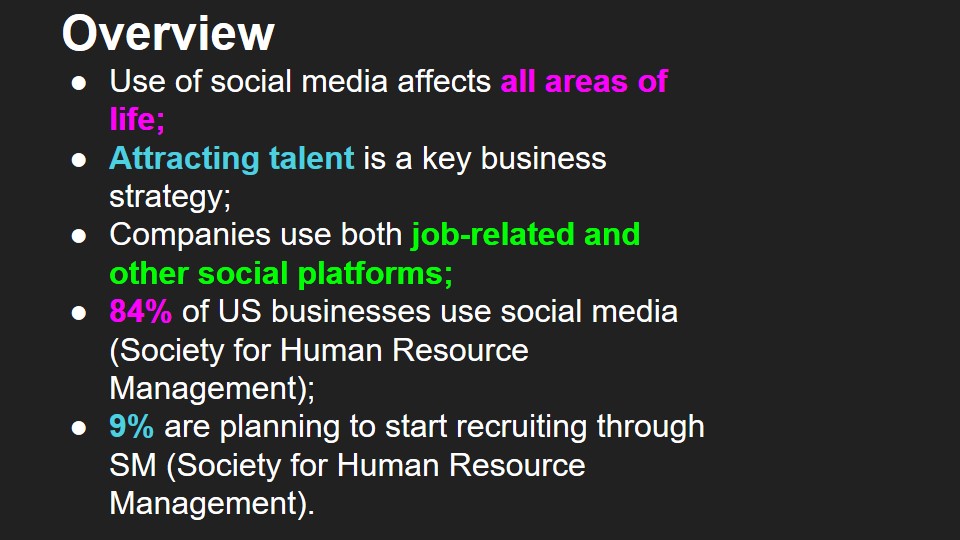
Advantages for Businesses
- Recruitment through social media has its advantages;
- Companies want access to more candidates;
- Traditional ways attract actively seeking candidates;
- SM allows to contact passive specialists;
- Passive talent acquisition is the main reason for using SM.
The main reason why companies all over the world turn to use social media is the desire to gain access to a larger pool of suitable candidates. As Koch et al. put it, traditionally, when it came to advertising jobs, businesses could only ‘spray and pray’ meaning that their choice of potential employees was limited to those who were actively looking and sending applications themselves (1). The exponential growth and popularity of social media have allowed for so-called passive talent acquisition – interacting with individuals who might not be seeking employment at the moment but who advertise their skills online. Society for Networks and Recruitment found that recruiting passive candidates was the top reason (82%) why businesses used social media.
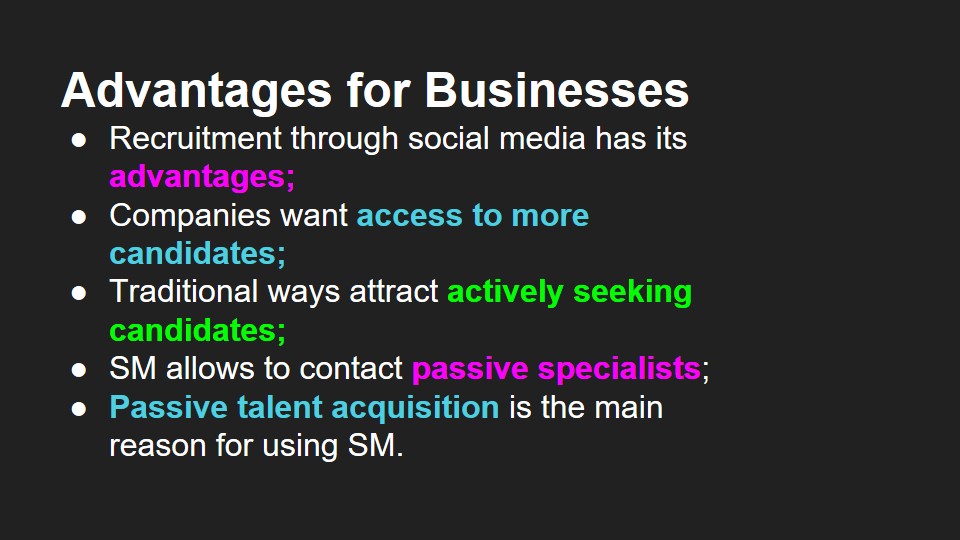
- Benefits are associated with global trends;
- Screening candidates is easier;
- Access to specialists all over the world;
- Communication is more personal and authentic.
Since many people post personal information online, potential employers can draw conclusions about their character and make a judgment whether a given individual would fit. Screening candidates thoroughly before scheduling an interview is reasonably time-effective. Second, the modern world is fascinated with the opportunities that working remotely presents. With social media, a business’ options are not limited to the local pool of candidates – instead, they can expand their scope of search and contact specialists with desired skills all over the world. Lastly, communication on social media might be more authentic, and a business might make sure to filter the pool for scammers and spammers.
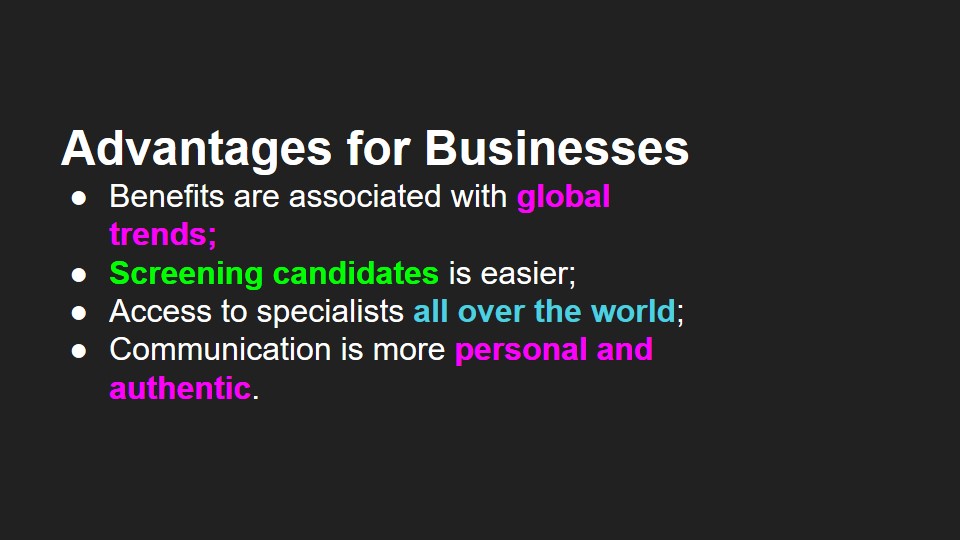
SM for Candidates
- Candidates face their own challenges;
- They are aware of multiple platform screening;
- Some have to change their online habits;
- Working on a personal brand is difficult;
- It overlaps with the desire for entertainment.
As for the candidates, social media use presents its own unique benefits and struggles. Even if a potential employee is only contacted on a specific SM platform, the odds are that human resource specialists might be screening his or her other profiles as well. While such a decision might be justifiable given the reasons named before – time-efficiency and filtering – for the candidates, such a tendency means changing their online habits. If an individual truly cares about their career, it is advised that he or she considers building a personal brand which means that all their social media outlets represent the best parts of their personality and highlight their achievements. However, one of the primary functions of social media is entertainment, and for many people, putting restrictions on their social media use is unwanted.
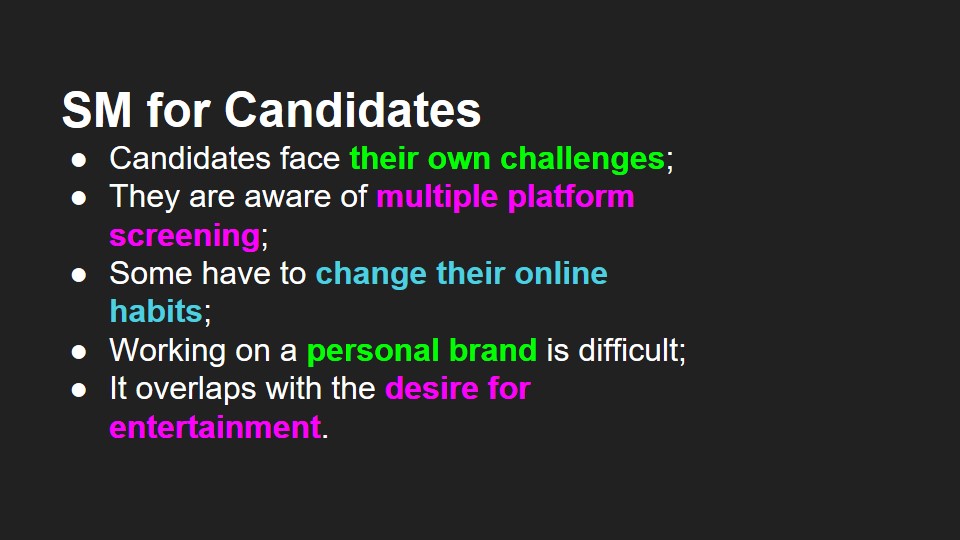
The Case of Justine Sacco
- Social media use can cost a career.
- In 2015, IAC senior director, Sacco traveled to South Africa.
- She wrote a racially-insensitive tweet (Ronson).
- She was bullied online as the post trended.
- IAC management board decided to fire her.
There are many cases in which inconsiderate use of social media cost hard-working individuals a career. In the world where a single post can become a number one global trend on a social networking platform, it is only reasonable to think about repercussions. One of the most resonant cases of a ruined career due to social media use is that of Justine Sacco. At 30, Sacco was already a senior director of corporate communications at IAC, New York. She was an active Twitter user despite a relatively modest followership of 170 people. As she was tweeting about travel indignities on her way to South Africa, she allowed herself to make an insensitive comment: “Going to Africa. Hope I don’t get AIDS. Just kidding. I’m white! (Ronson)” Soon, Sacco’s post trended worldwide, and once it reached her company’s management board, she was fired.
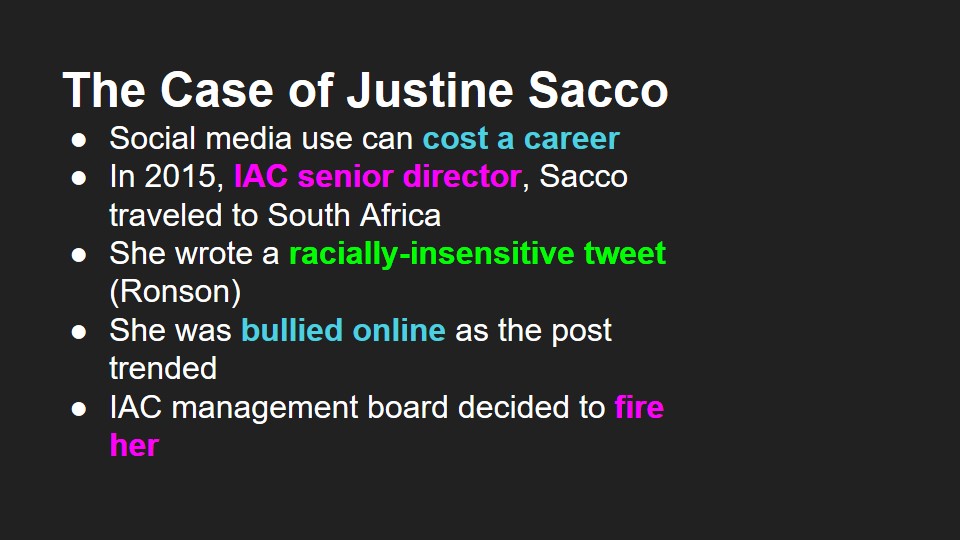
Identifying Challenges
- New challenge: ethical SM use.
- Global trends are a contributing factor.
- The world is growing more interconnected.
- Businesses care about upholding positive values.
- Each employee is a brand ambassador.
Even though Sacco was not in the process of a job search when she made a fatal mistake, her story raises an important question as to how candidates should use social media and what criteria companies should employ when screening profiles. Overall, there are two tendencies to be heeded when putting up a social media profile: first, the world is becoming overwhelmingly interconnected, and second, businesses are now held socially accountable. If previously, companies used to focus on generating more revenue, and without doubts, that objective remains relevant, today, customers pay attention to corporate values and philosophy. Due to the increased scrutiny, large companies see every key employee as an ambassador of their brand. Hence, if as in the case of Sacco, the said ambassador fails to complete the mission, the company might face harsh repercussions.
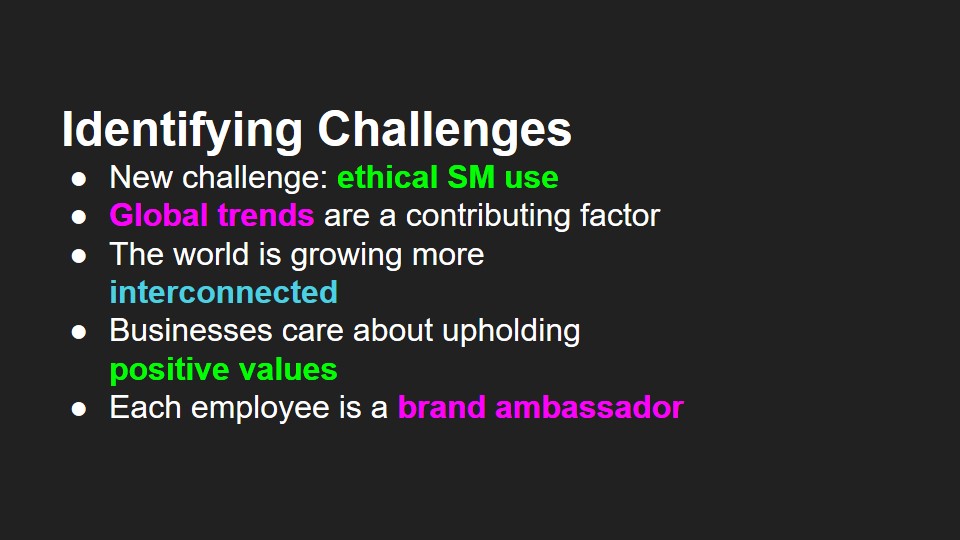
Recommendations for Candidates
- Taking care of SM is not arbitrary.
- Ethical media use goes beyond keeping a neat profile.
- Educating oneself on social issues is a must.
- Social consciousness helps to identify offensive content.
Taking care of social media outlets is no longer arbitrary as a consistent and ethical personal brand might be a deciding factor for employment. For candidates, using social media consciously means not only distinguishing between what is appropriate and what is not appropriate to post while searching for a job. Ethical media use expands beyond keeping one’s profile neat – it takes greater social awareness and accountability. An individual should make a choice to educate himself or herself on the state of affairs and truly understand why some content might be offensive.
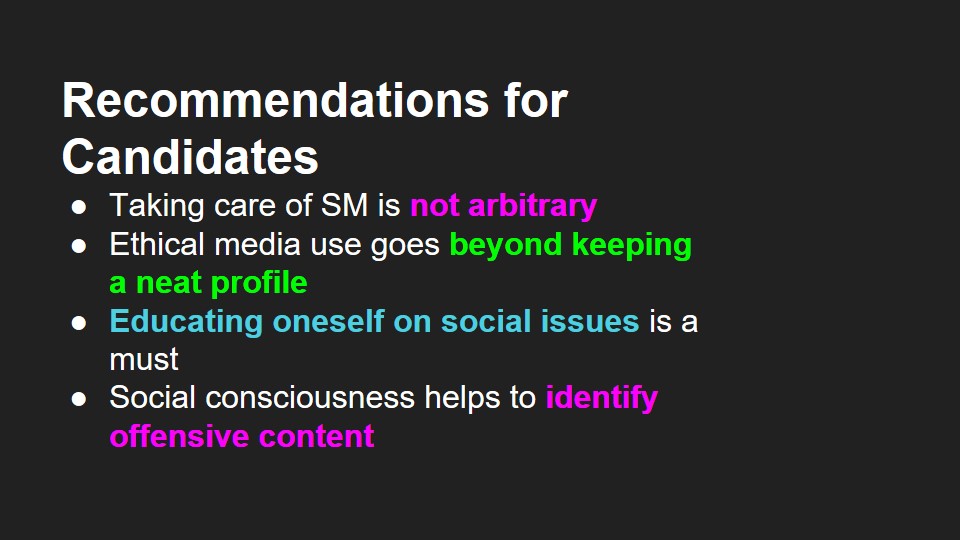
Recommendations for Businesses
- Screening before considering a candidate.
- Being clear about key values.
- Two-thirds of job seekers gain insights from corporate SM (Whitepaper 7).
- Vision statement might filter unfit candidates.
- Hiring a recruitment consultant might help.
Businesses are growing concerned with their employers’ social media use, and often, they decide to screen candidates’ profile before even considering them for a position. To make the process more robust, a company should be exceedingly clear about its values and what it wants to translate with its impact. 67% of job seekers use social media to gain insight into a business’ corporate culture (Whitepaper 7). At this point, by posting about its vision and mission, a business might automatically filter unfit candidates who do not share the same views. Another workable solution is hiring a recruitment consultant who after examining a company’s needs and values, might develop an effective social media search campaign to attract the best talent available.

References
Koch, Tanja, et al. “The Impact of Social Media on Recruitment: Are You LinkedIn?” SA Journal of Human Resource Management, vol. 16, no. 1, 2018, pp. 1-14.
Ronson, Jon. “How One Stupid Tweet Blew Up Justine Sacco’s Life.” The New York Times Magazine. 2015. Web.
Society for Human Resource Management. Using Social Media for Talent Acquisition. 2017. Web.
Whitepaper, Robert Walters. Using Social Media in the Recruitment Process. N.d. Web.